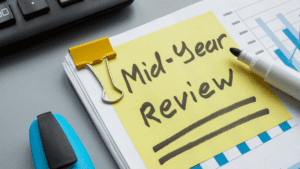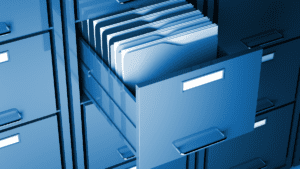
The 20s are a wild decade. One moment you’re graduating college, without a worry (just a bit of student debt) in the world, the next, you are hitting the big 3-0.
There are two types of people in the world — those who get married, have kids, and are living the perfect suburban life by the time they are 30; and then, there are those who are still dealing with the hangover from yesterday’s party and are busily unfollowing the first kind of people on social media.
But don’t worry, whichever end of the spectrum you fall on, this Ultimate Personal Finance Checklist will help you ensure that you’ve got all your ducks in a row. The items are listed in order of priority and ease of completing, so just begin at the beginning and go from there.
1. Pay Yourself First
The costliest mistake we make is to treat savings as an option. It’s not; not unless you relish the thought of being old and penniless. Even before you start earning, you need to learn this lesson.
In short, Pay Yourself First means that you come up with a monthly savings goal that is achievable for you, and automatically transfer that amount to savings as soon as your salary hits your account. Whatever is left after your savings, is all you have for expenses. It’s recommended parents start teaching this as soon as their kids can understand.
2. Implement Pay Yourself First
Now that you know the concept, implement the lesson. Unfortunately, we live in a generation where we only consume information and don’t put it to use. Don’t waste good information. Determine your budget, decide what is the average amount that you can pay yourself per month, and actually set up a standing instruction to move that money.
If you already invest, then you know where to move it. If you don’t (and we will come to that), just move it to another account (not your primary account) for the time being.
The action points for Pay Yourself First are:
- Track your expenses for a month.
- Categorize these expenses into four broad categories — food (including groceries, eating out), housing (rent, mortgage, etc.), transportation (gas, car payment, public transit etc.), and miscellaneous. These are your recurring expenses.
- Add annual expenses like home decor/maintenance, gifts for birthdays, anniversaries or holidays, insurance payments, and travel plans. Even if you don’t own insurance, estimate an amount for basic health insurance and term life insurance and set it aside.
- Determine your monthly budget using your recurring and annual expenses.
- The difference between your monthly budget and your net monthly income is your saving. Set up a standing instruction with your bank to transfer this amount directly to another bank account immediately after your salary is credited. Set it and forget it.
- If this number is zero or negative, you need to either cut your expenses or augment your income, in order to move ahead financially.
3. Check your emergency fund status
Did you start a rainy-day fund? Have you kept up on it? It’s important to check in on the fund meant for life’s inevitable bumps and stumbles. Give your emergency fund some TLC by analyzing its current state. Does it offer a cushion for three months’ expenses, like rent, groceries, and bills? If not, consider setting a realistic goal to gradually grow it. Every dollar counts, so even small weekly or monthly contributions make a difference. Treat your emergency fund like a muscle — regular deposits strengthen it, making you more resilient when unexpected challenges arise. Remember, financial security is built brick by brick, and a robust emergency fund is a cornerstone of a calm and confident future.
4. Set up life and health insurance
Once your emergency fund is set up, it’s time to set up two insurances. The first is health — health expenses are the foremost reason for tacking up debt. Set up generic insurance that will cover major hospitalization expenses. If your job provides this for you, great, skip ahead. Second, set up a term or whole life insurance policy. If you’ve already set aside the estimated insurance payments, this step can be done even while your savings are being diverted to your emergency fund.
5. Check your credit score and get a no-fee credit card
Credit history is an important variable, which will decide how cheaply you can get big-ticket items in the future like mortgages and car loans. Check your score, and if it seems incorrect, engage with a credit repair agency.
If all is fine, get a no-fee credit card, and learn how not to get into the trap of CC debt. Use it for mandatory bills, pay it off in full, and watch your credit score rise with the sun.
The rules for using a credit card responsibly are:
- Only route budgeted payments through your credit card — anything that has been covered in Point 2 can be safely charged to your credit card. From your budget, you’ll already have an estimate of how much your credit card bill would be.
- Keep a note on your phone, in case any of the payments are out of their usual range. For example, if your electricity is usually $100, a $200 bill needs to be noted down. This will help you to avoid any surprises in the bill and give you a realistic estimate of what you have spent.
- Once your salary has been credited (and your savings debited), the remaining money is yours to spend — minus the estimated credit card bill.
- ALWAYS pay the total credit outstanding, even if you have to beg or borrow (no stealing). The credit card’s APR (the interest they charge you for outstanding payments) is usurious and can doom you to debt.
6. Rapid Debt Payoff
Now that your defense is ready, time to go on the offensive. You can follow either the debt avalanche or the debt snowball methods to start paying off your debt. Only the lowest rate debts like a mortgage can be skipped for this step.
Both the debt avalanche and the debt snowball methods require you to pay the minimum amount due to every debt owed. The only point of divergence is the allocation of the surplus amount to be paid — while the debt avalanche allocates it to the debt having the highest interest rate (and hence saving you from the most toxic debts first), the debt snowball allocates it to the smallest debt irrespective of the interest charged (thus giving you a psychological boost as smaller debts get paid off quickly). The debt avalanche will help you pay off the debts the quickest, so that is the one we follow.
The action points to rapidly pay off your debt are:
- Make your own personal Table of Debt in the format below
- Ensure that the total of your payments made ($950) is higher than the total of minimum payments ($600), since that is the only way to pay off the debt. Once your Emergency Fund is paid off, divert your entire savings towards this.
- Now, manage your surplus payments being made in a way that the minimum payment for each debt is met, and the remaining surplus is put towards the first debt in your table (sort by interest rate — highest first). In this case, you would pay $0 to Aunt Sally (thank her, though!), $500 to the Auto Loan, and the remaining $450 towards the credit card.
- Once the first debt is knocked off, you will have a sizeable amount to pay towards your second loan. In this case, once the credit card is paid off, you would have an additional $450 that can be paid towards the auto loan, in addition to the $500 minimum payment already being made. Soon, you will have an avalanche of debts being paid off rapidly.
- Note: Not all debts should be paid off rapidly. Since you can expect an average return of about 8–9% from your investments, anything above that definitely needs to be paid off. Anything below 5% can be delayed. In the mid-range of 5–8%, you should take a call depending on your own risk appetite (higher the risk you’re willing to take, the higher will be your return from investments) and the time horizon for investments (the longer the time available with you before you retire, the higher will be your return).
7. Get Planning for Retirement
If you have followed everything up until now, you would have a surplus going into a savings account (from Point 2), with no purpose (since you’re done with building up the emergency fund and paying off your debt).
Get comfortable with retirement calculators and see when you can retire comfortably with that surplus amount. If it fits in with your idea of life, great. Otherwise, you will either have to cut expenses or increase income, in order to bump up that figure. Set up a meeting with your financial advisor or research the usual tax-saving retirement avenues.
Do not overthink it. Anything that is tax-saving, low cost, and diversified, is perfect. If your retirement funds so allow, invest in low-cost index mutual funds. Once you have maxed out your tax-saving alternatives, invest the remaining in non-tax-advantaged but still low-cost index mutual funds. Yes, that’s right. The recommendation remains constant — no stocks, no other investment avenues. Just the index. And no, it isn’t too soon — it’s just right.
The action points for planning your retirement are:
- Estimate when you can retire by investing your current surplus. Accept it, or plan to increase the surplus to retire earlier.
- Set up the retirement vehicle that your employer offers since it will usually come with an employer match — free money!
- Invest in low-cost index funds till you max out these vehicles
- Invest in low-cost index funds outside these vehicles (i.e. through a brokerage) if your surplus is more than what the tax-saving vehicles allow
8. Start Tracking Your Net Worth
This is the time to really buckle up and put numbers where your mouth is. Start a quick net worth table in a spreadsheet, with a list of all your assets and liabilities. The net worth tracker is a simple table of all your assets and your liabilities, and the difference between the two. And update it every month, on a fixed date.
The action points for tracking your net worth are:
- Write down all the assets you own. This would range from financial assets like bank accounts, deposits, mutual funds/stocks, and retirement funds, to other ‘real’ assets like jewelry, real estate, cars, etc.
- Make a list and put down their values. While financial assets will not prove a problem in this, real assets can be notoriously difficult to evaluate. Do your best — there are sites that will give you current prices for cars, real estate, etc. Underestimate rather than overestimate.
- The other side of this equation — the debt side, was already prepared in Point 6. Plug this in and your table is ready.
- Now for the difficult part — subtract your debt from the assets. The number left is your net worth.
- Every month, without fail, you need to set aside just 10 minutes of your time and update this tracker. And watch it rise as your savings start building up.
9. Get an Accountability Buddy
Now that your basic ducks are in a row, you should pass on the knowledge. It’s a win-win because you get an accountability partner when you do this. And what should you speak about with said partner? Now is the time to make a list of your remaining financial goals, and work towards them. They could be goals like beefing up your emergency fund a bit, gathering a down payment for a home, or funding your children’s extracurricular activities.
Sharing them with each other makes you MUCH more likely to actually achieve it. You can divert some amount of your retirement contribution if you’re okay with increasing that timeline a bit. You can cut expenses or find a way to make some extra cash and put that towards these secondary goals. Yes, they’re all secondary — emergency funds, insurance, debt payoff, and retirement need to be prioritized. If all of them are in place, then there is very little life can throw at you that you’ll be unable to sustain, at least for a while.
Let’s Go!
The beauty of this checklist is that you can safely follow it in order, and it will give you a blueprint of what you could achieve in your 30s. But if not your 30s, your 40s or 50s. Try your best, but also recognize that everyone’s life follows a different path. Someone who has graduated in STEM and has no student debt will naturally be much more ahead than someone who is struggling for a job and has three dependents. The goal of this checklist (and all checklists, if you so decide) is to give structure, not anxiety! Get cracking and get checking!



